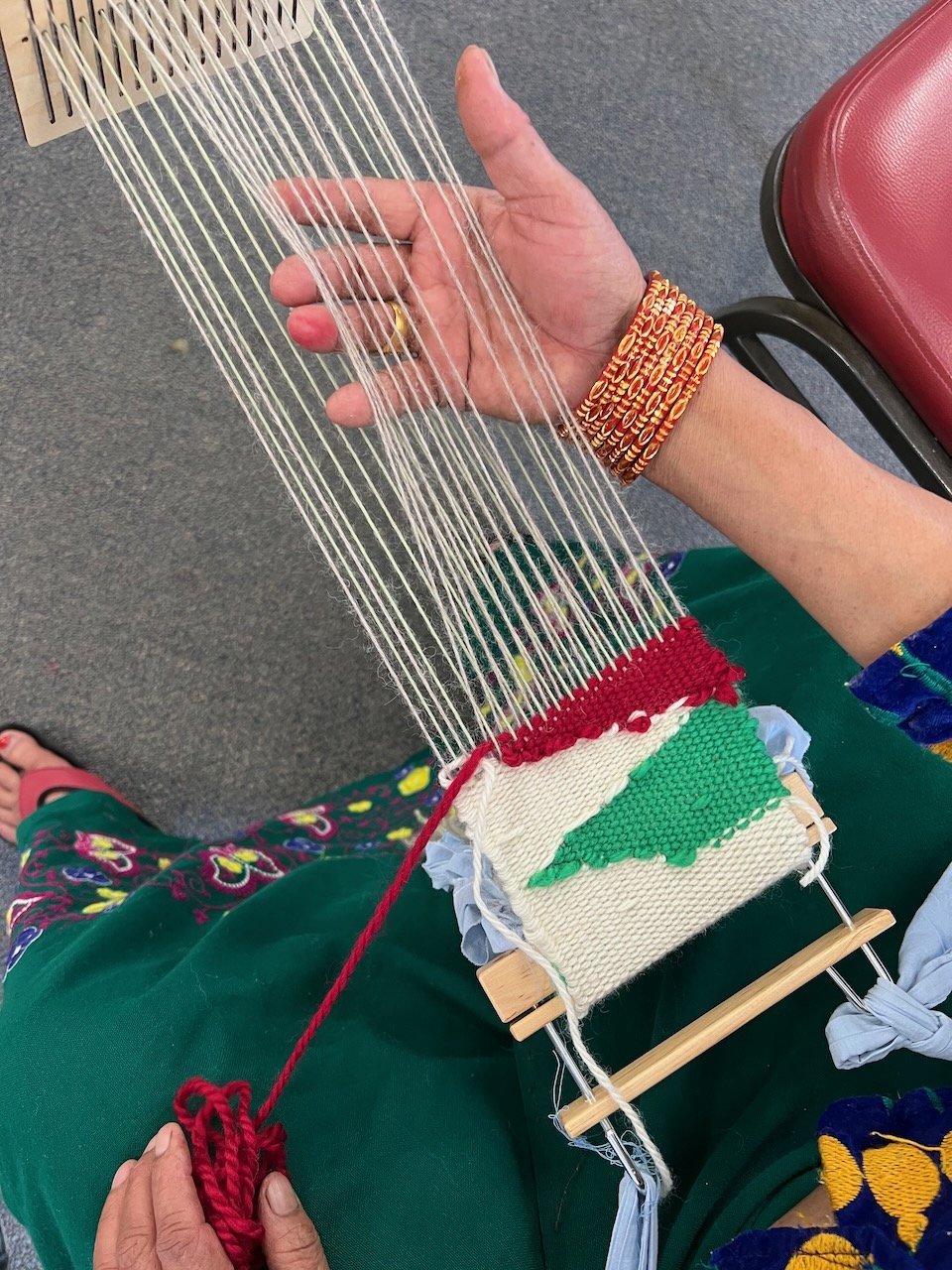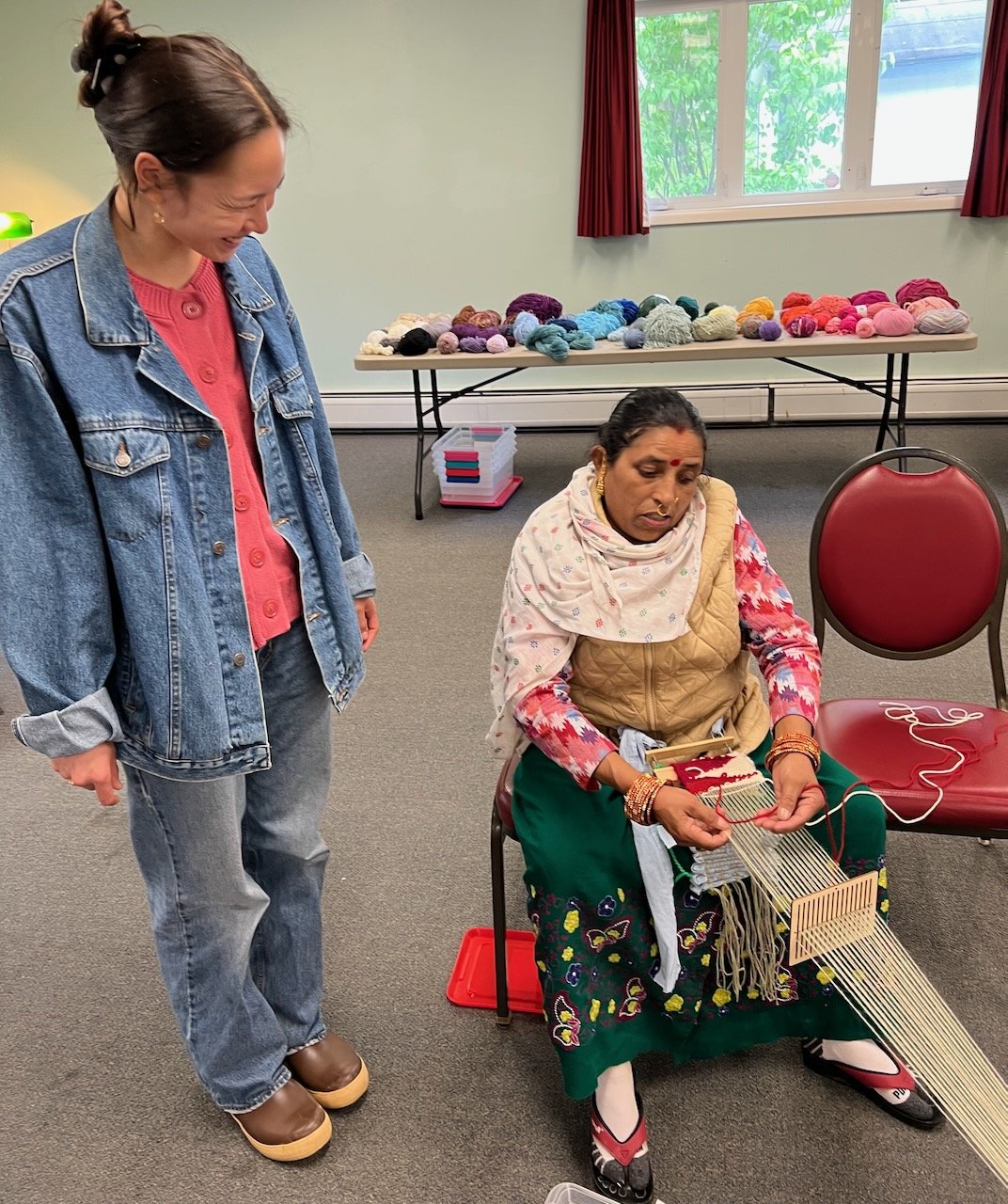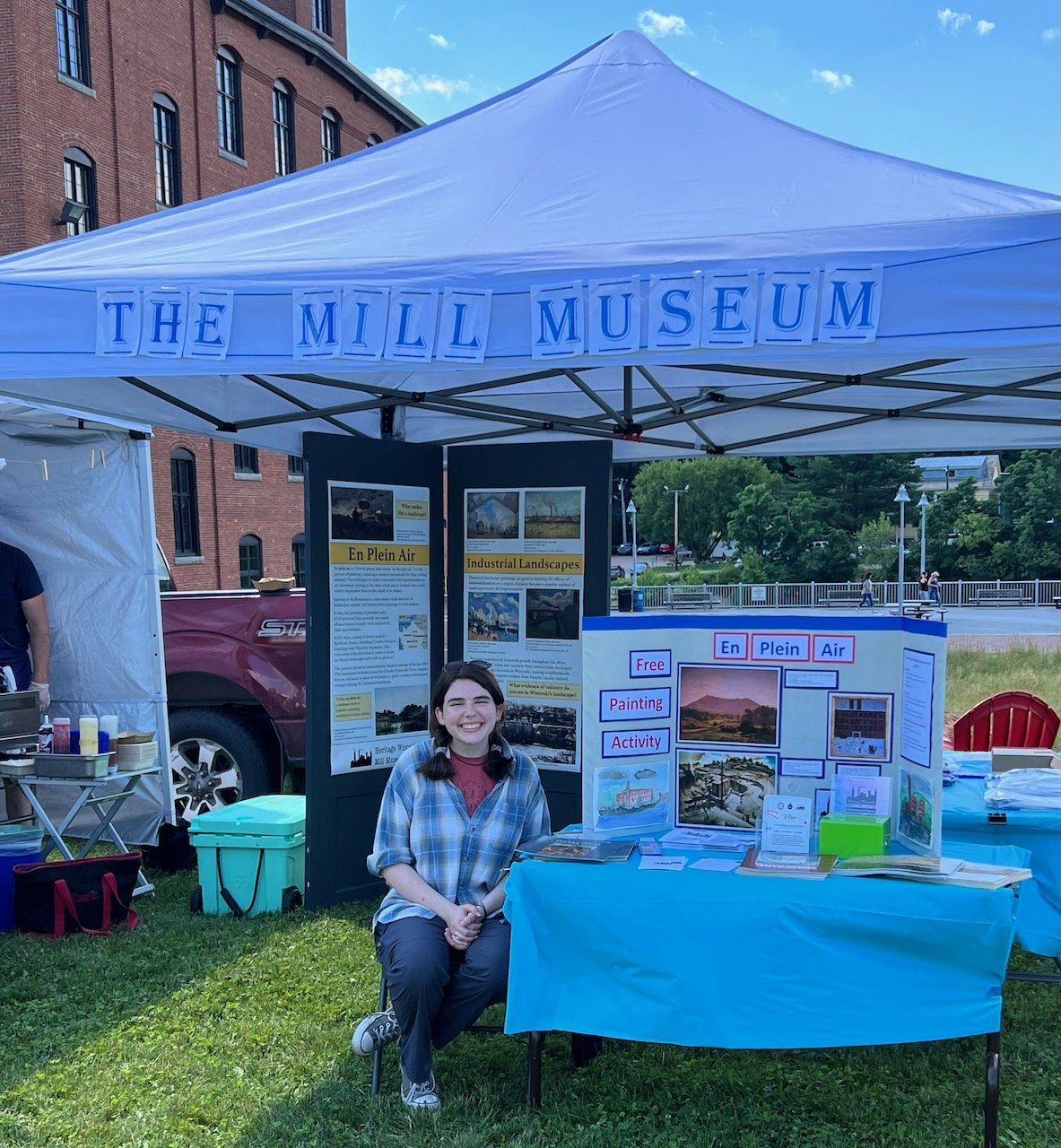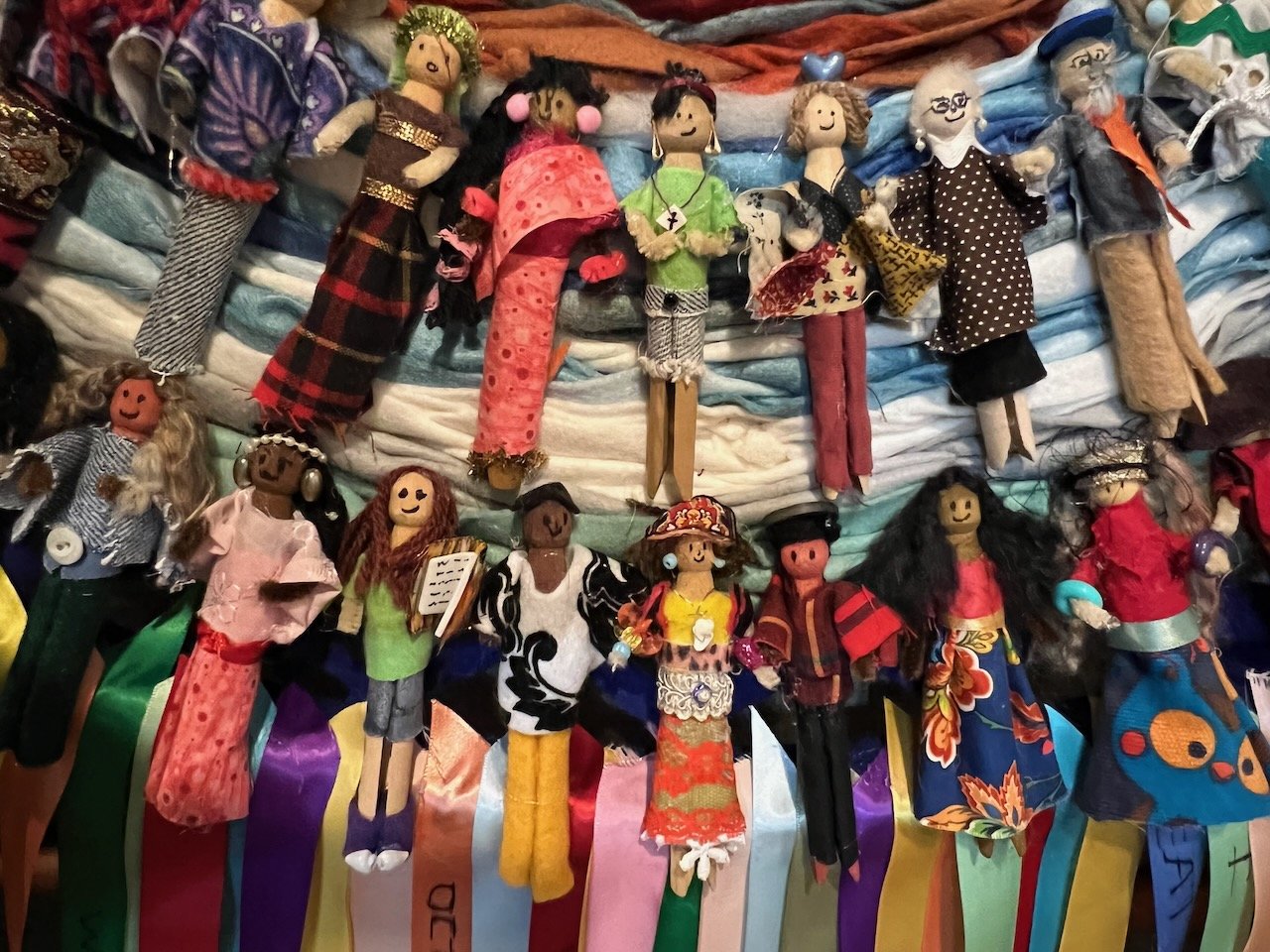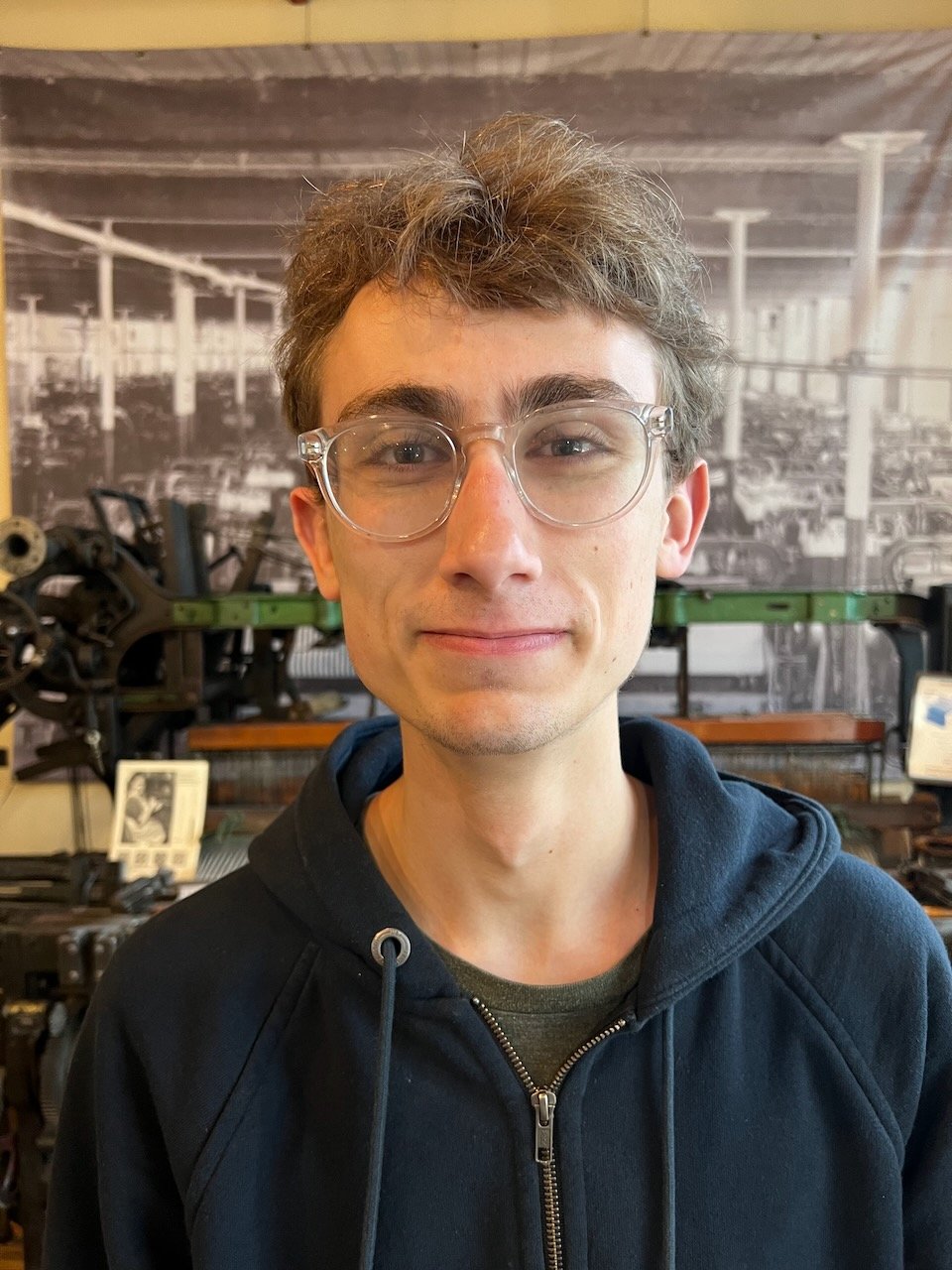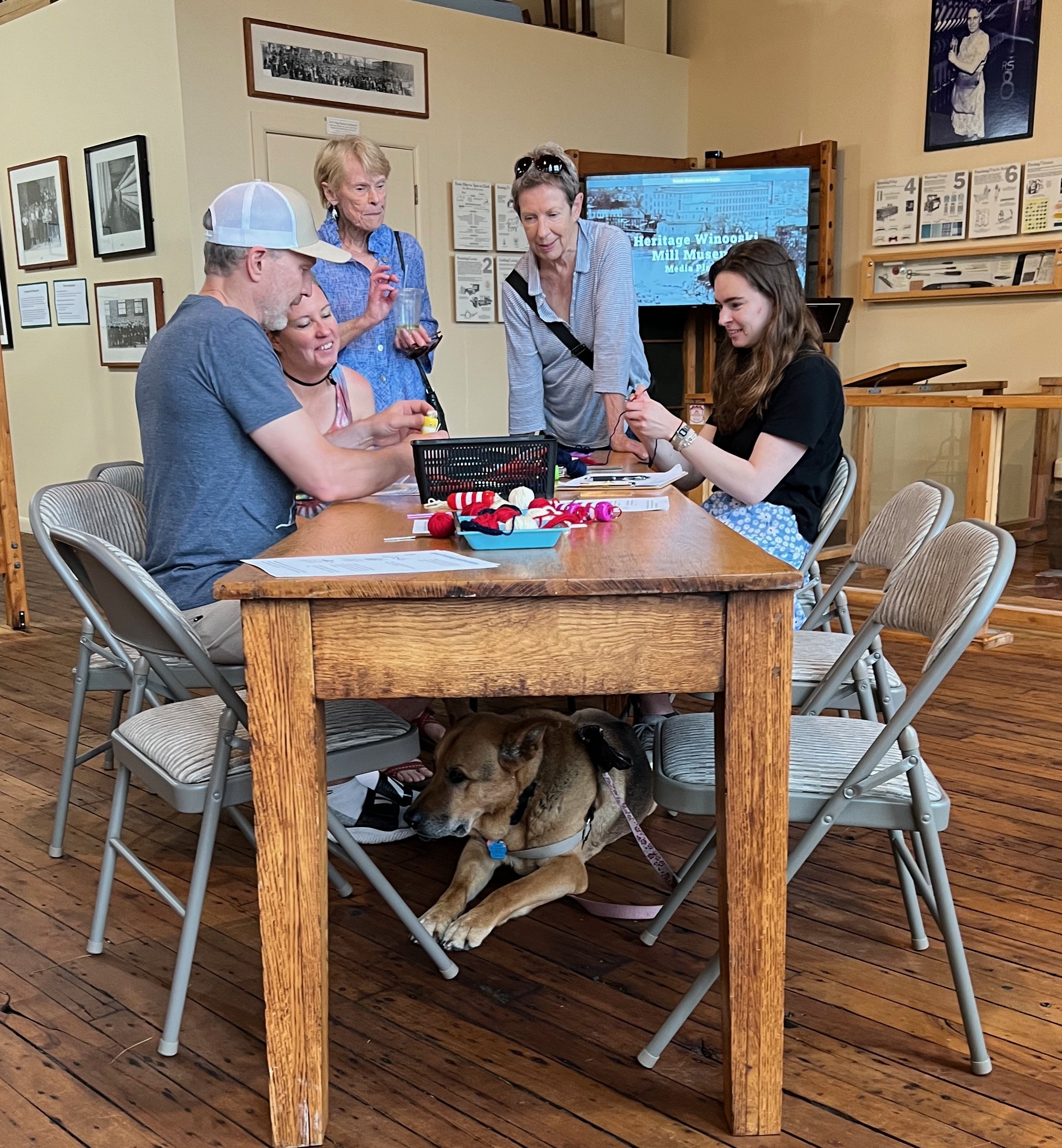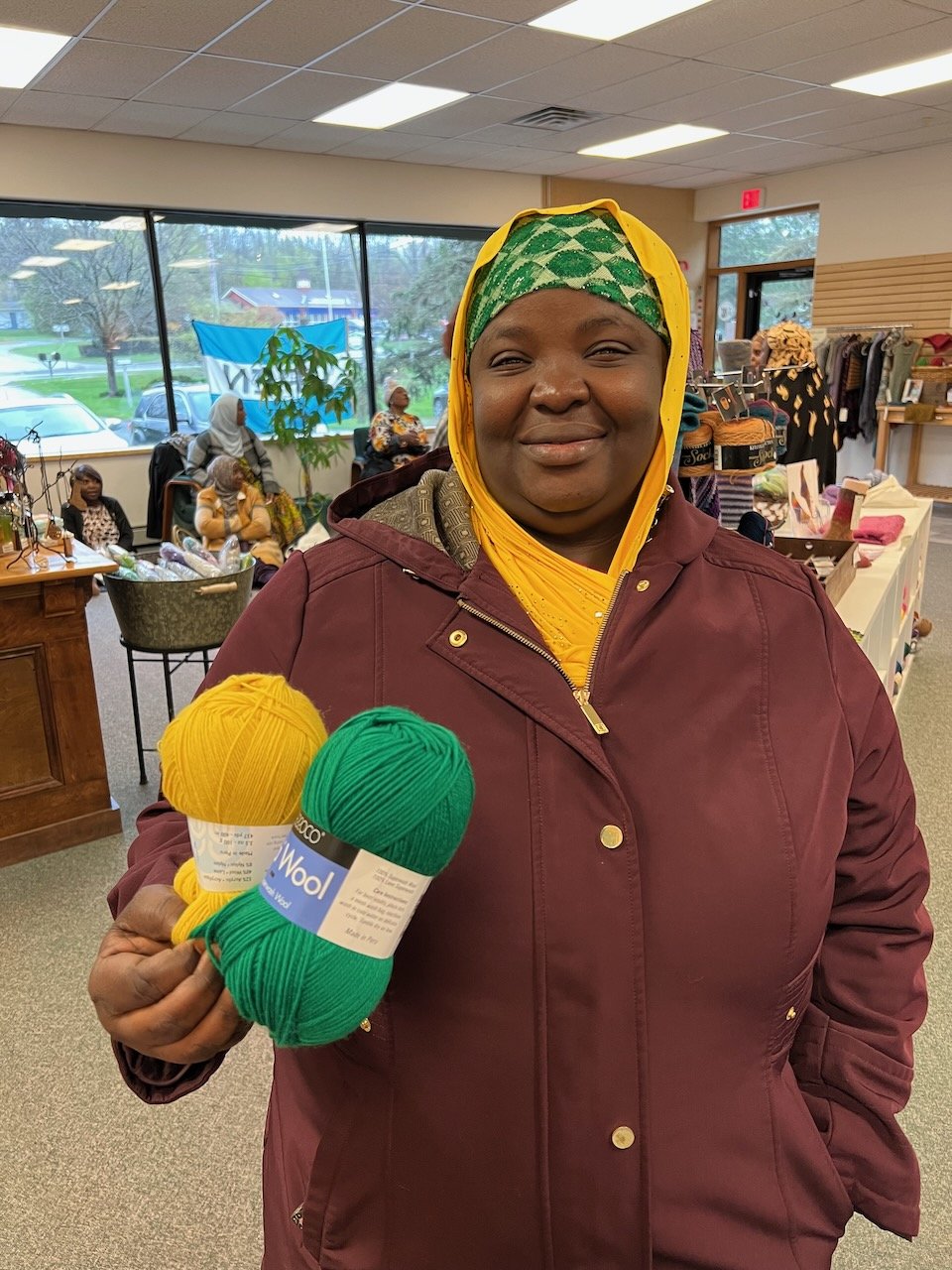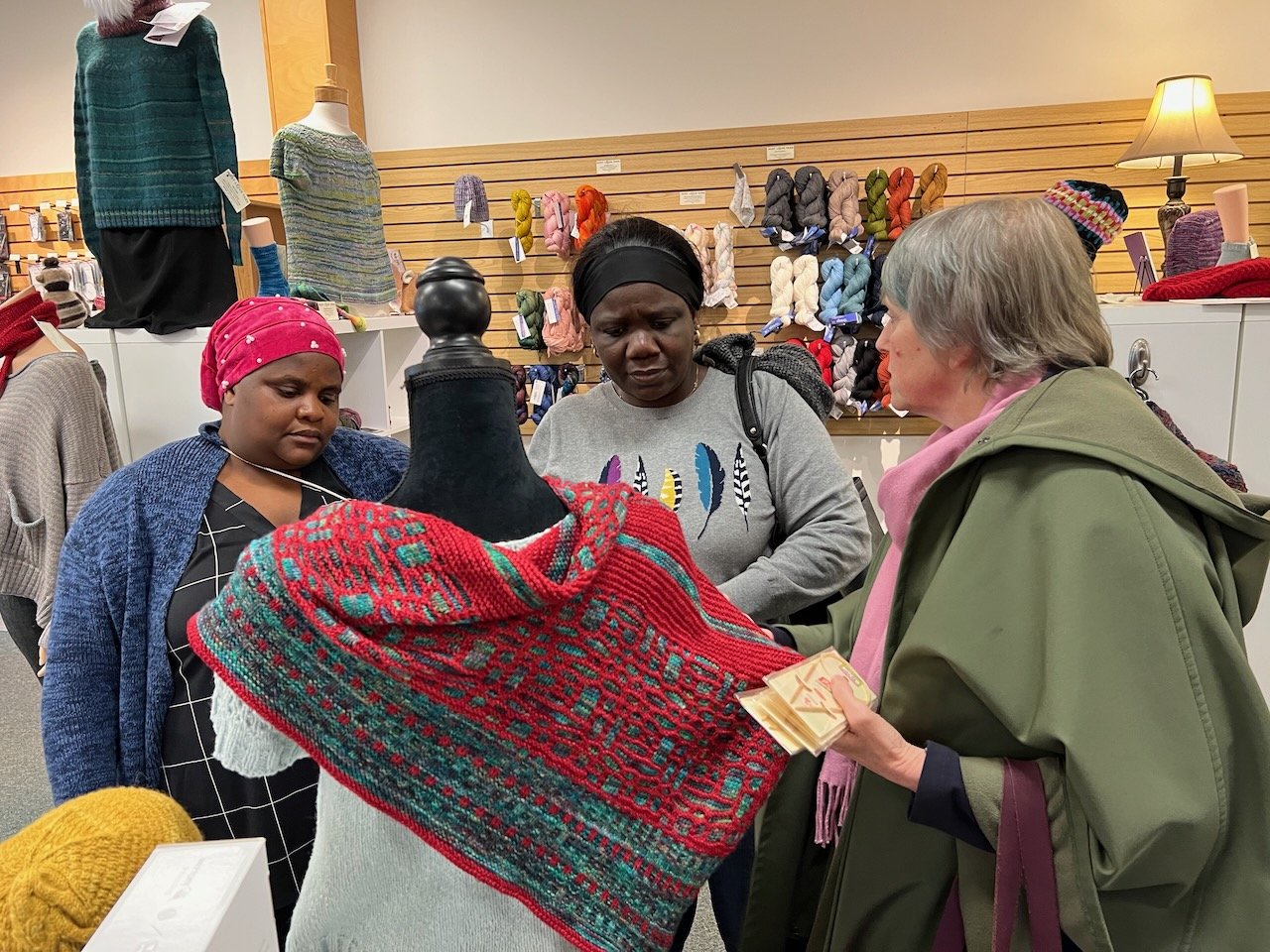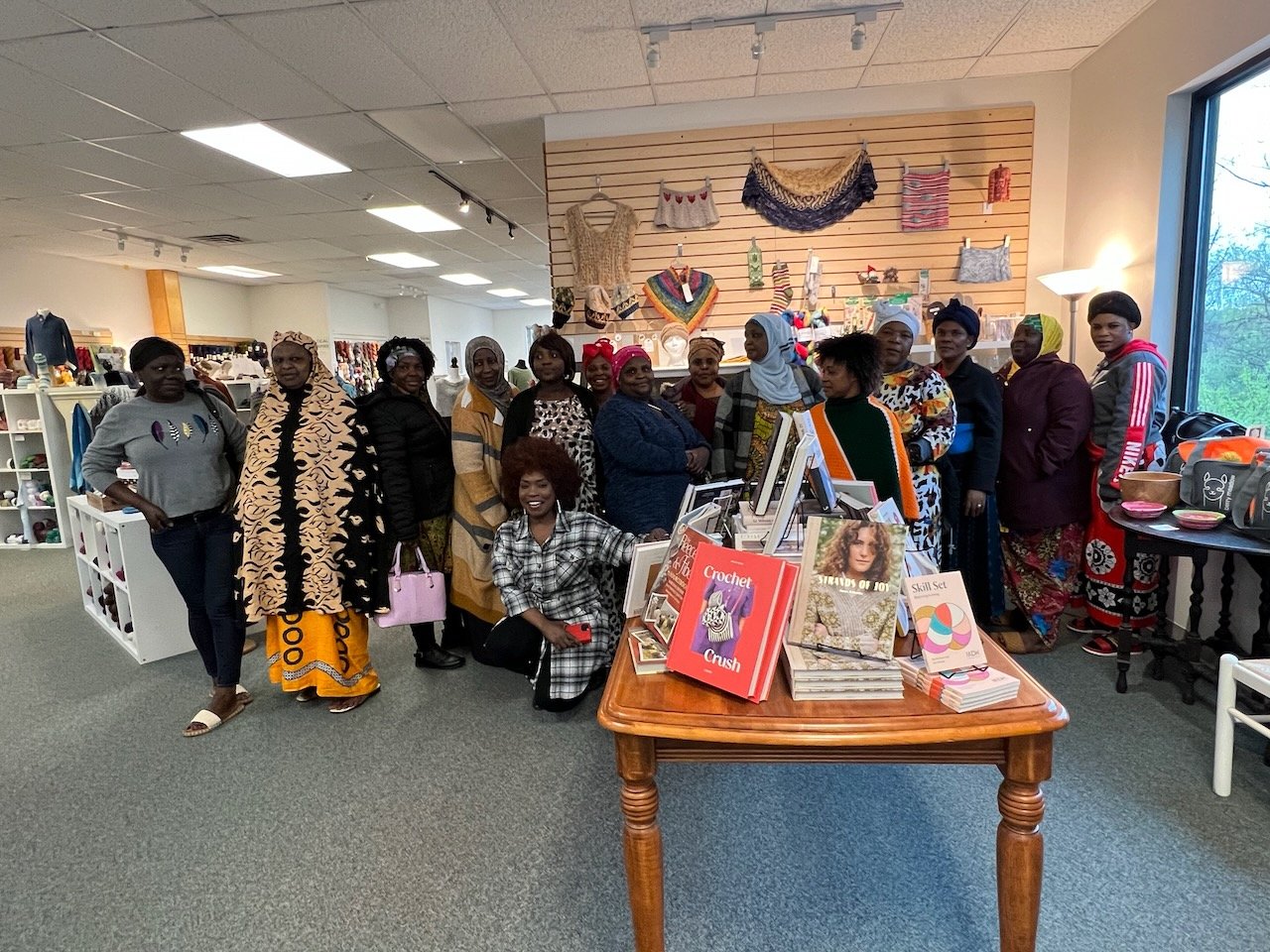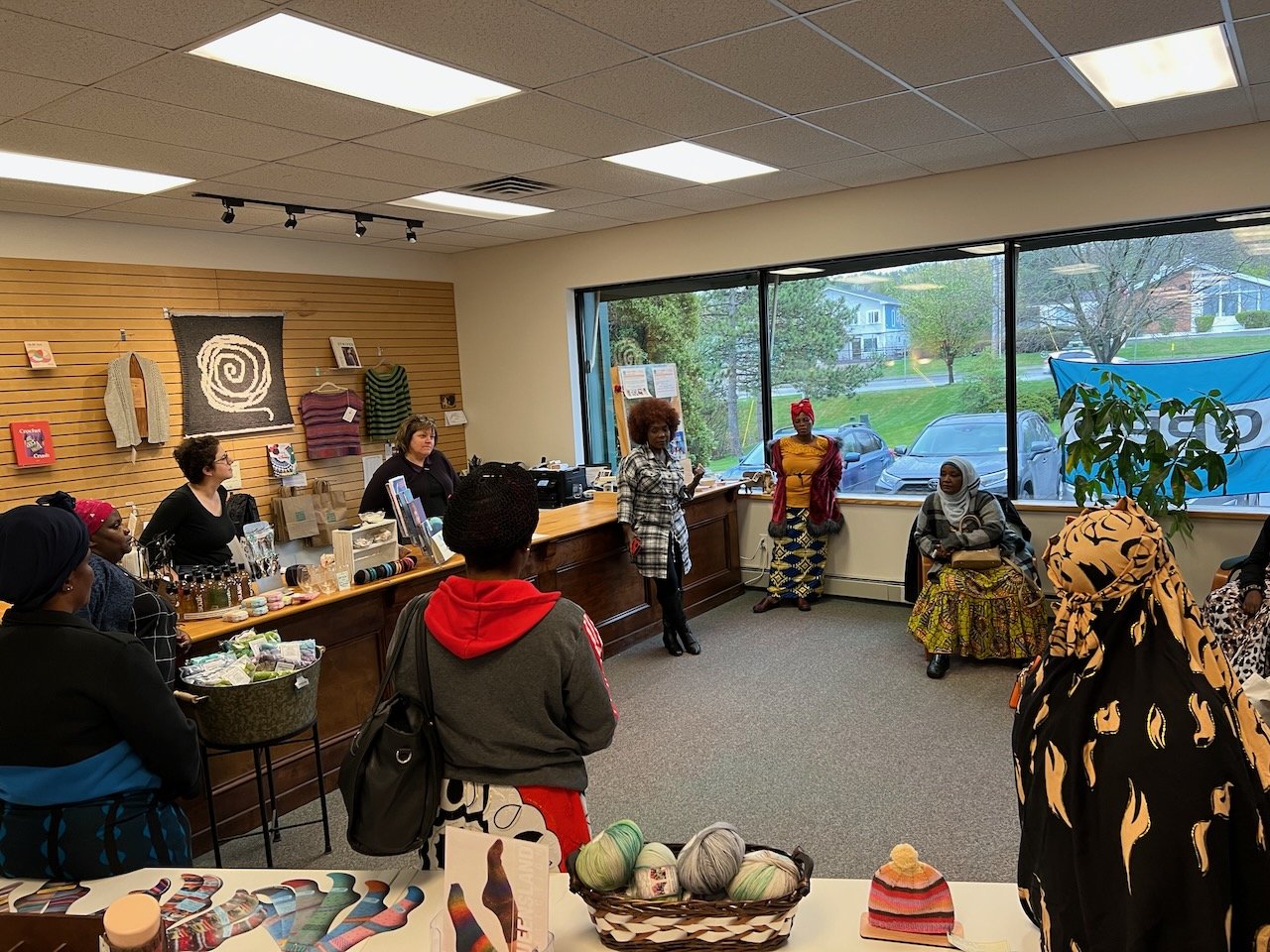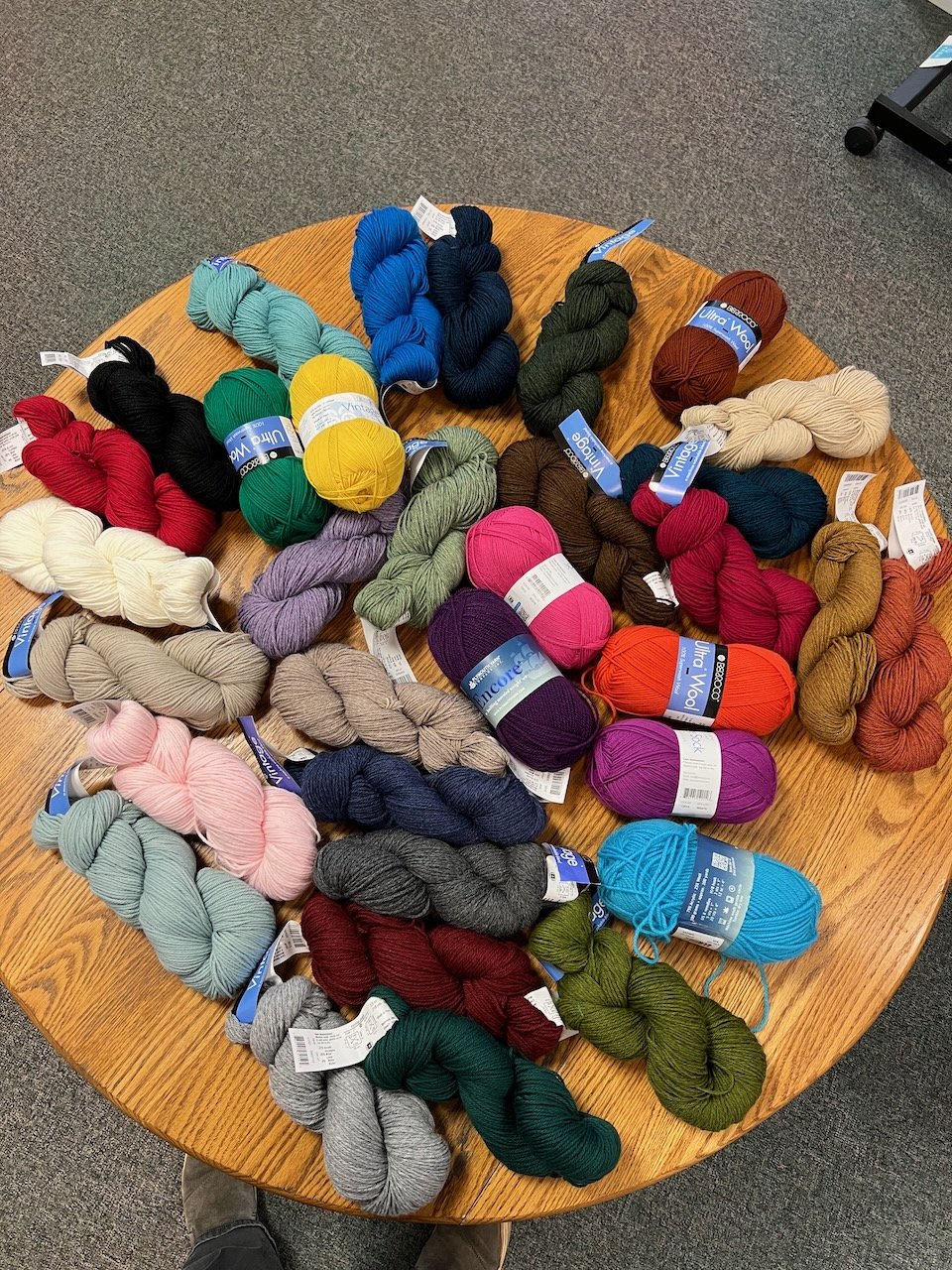Woven Community
/By Sarah Maroney
Closeup of Backstrap Weaving
One of the most meaningful parts of my experience interning at the Mill Museum has been assisting museum director Miriam Block with teaching weekly backstrap weaving classes at the Winooski Senior Center. What began as a simple art activity quickly grew into something much deeper, becoming a space for connection, creativity, and cross-cultural learning.
In May and June, seniors gathered to weave by hand, using a traditional backstrap loom that ties the weaver to their work in a very literal way, each weaving their own timeline to represent their lives. Among the participants were several Nepalese women. It's been incredibly powerful to see them reconnecting to the art of weaving, while also introducing their knowledge to others. Through conversations, shared techniques, and quiet moments of focus, the group has become a place where new traditions are learned, creativity is expressed, and friendships form.
This experience has also deeply expanded my understanding of the importance of cultivating a sense of community among older adults. As we sat together each week chatting, sometimes simply weaving in companionable silence, I came to appreciate just how many stories, skills, and perspectives the participants carry with them as knowledge holders, cultural stewards, and storytellers. It was a privilege to be part of cultivating that connection, helping to stitch together pieces of Winooski’s cultural fabric through the shared act of weaving.
Sarah Maroney and Nepali backstrap weaving participant at the Winooski Senior Center.
Particularly this year, at a time when social resilience is more necessary than ever, the act of coming together as a community to create something by hand holds profound meaning. Artmaking, especially in group settings, has a unique ability to deepen relationships, providing a space for both healing and expression. These kinds of communal creative spaces remind us that resilience is not just about surviving hardship, it’s about nurturing joy, connection, and a shared sense of purpose. In that way, art becomes a thread helping hold us together through times of change, and through hardship, cultivating strong communities who will thrive together.
Sarah Maroney interned at the Mill Museum during spring 2025 and is a recent UVM graduate. She earned her BA in Global History and Environmental Studies in Dec. 2024. New to weaving, Sarah learned how to prepare the warps and thread the backstrap looms for 15 participants. Thank you Sarah!
The Backstrap Weaving workshops were made possible by a Creative Aging grant through the Vermont Arts Council.


